Durian Q&A
6/16/20258 min read
Welcome to the world of durians! Whether you're visiting a durian farm or trying this famous fruit for the first time, this Q&A will guide you through the fascinating journey of durians—from the plant lifecycle to the best breeds and fun facts.
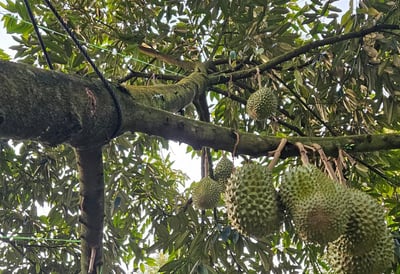

1. When does the durian tree mature?
The durian tree typically matures by the 8th or 9th year. It starts as a sapling, then grows rapidly during the first few years. By year 5, it begins to flower, and by year 7-9, the tree produces its first fruits.
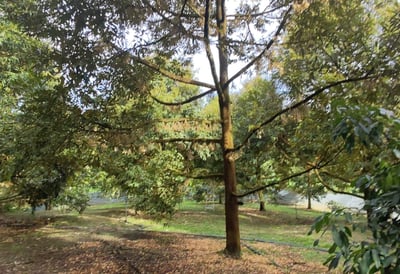

2. How do durians grow in the wild as compared to in the orchard?
Durians grow on large trees that can reach up to 50 meters tall in the wild, but in orchards, they’re usually pruned to a manageable height. The tree produces flowers that are pollinated by bats and sometimes bees. After pollination, the fruit matures in about 3–4 months.
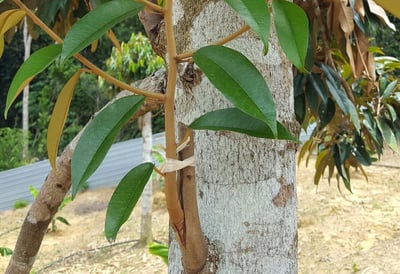

3. Are durians in the farm grown from seeds or grafting?
Most commercial durian farms use grafting to produce trees, which ensures the fruit quality is consistent and the tree bears fruit in 7–9 years. Seed-grown trees can take up to 15 years to produce fruit.
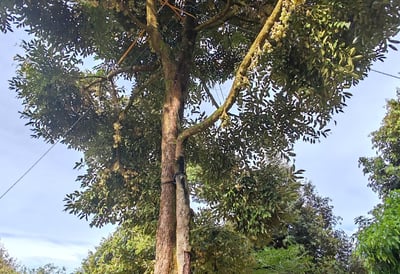

4. When is durian season in Malaysia?
The peak season for durian in Malaysia typically starts in June and lasts until August, but depending on the variety, you can find durians throughout the year. Some varieties may bear fruit during the off-season, creating multiple harvests.
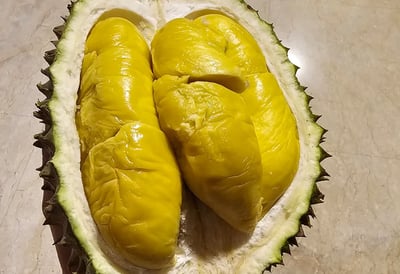

5. What makes Musang King so special?
Musang King is considered the gold standard for durians due to its creamy, bittersweet flavour and smooth balanced texture. Its flesh is rich and golden-yellow, and it has a strong, distinct aroma that lovers crave. It's highly marketed and sought after, especially in China and Singapore.
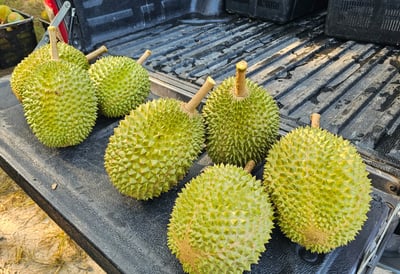

6. How do you know when a durian is ripe?
A ripe durian typically:
Has a strong, distinct aroma.
Makes a hollow sound when tapped.
Has a slight yellowing or cracking on the shell.
Ripe durians usually fall naturally from the tree when ready.
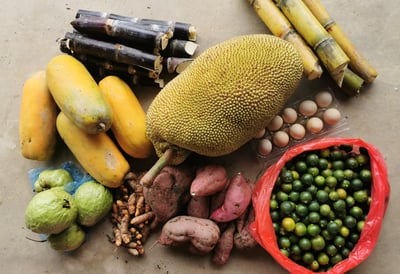

7. Can you eat durian with other fruits or food?
While it’s perfectly safe to eat durian, it’s not recommended to pair it with alcohol or other fruits like citrus. The combination can lead to digestive discomfort. Durian is best eaten on its own or in desserts.
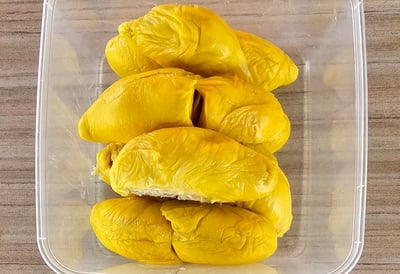

8. Is durian good for health?
Yes, durian is packed with nutrients like fiber, vitamins (C and B complex), potassium, antioxidants, polyphenols, and flavonoidsand healthy fats. These compounds help combat oxidative stress and support the body’s immune system. The fruit's high potassium content also helps regulate blood pressure. It’s a great energy booster, but because of its high calorie content, moderation is key.
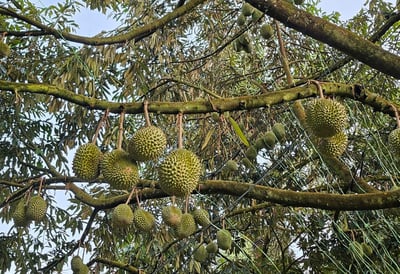

9. What’s the lifespan of a durian tree?
A durian tree can live for over 50 years, though most are harvested after 10–20 years when their fruit output starts to decline. Some trees may even produce multiple harvests in their lifetime.
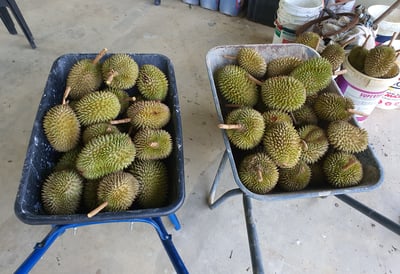

10. How many durian varieties exist in Malaysia?
There are over 200 different durian varieties in Malaysia alone, but only a few, like Musang King, D24, Black Thorn and Red Prawn, are commercially popular. Some varieties are rare and only found in specific regions.
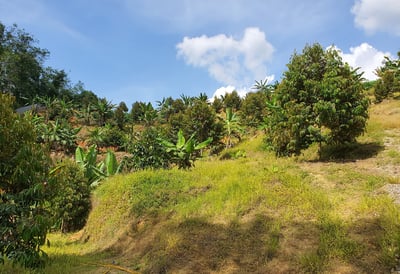

11. Can you plant a durian tree in a home garden?
Yes, you can plant a durian tree, but it requires a lot of space and a tropical climate. The tree needs well-drained soil, plenty of sunlight, and consistent rainfall. It’s ideal for areas like Pahang, Johor, and Penang that are more hilly.
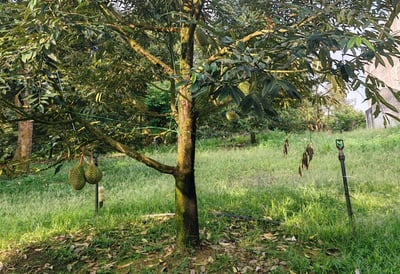

12. Durian Trees Are Picky About Their Soil
Durian trees thrive in well-drained, deep soils with a slightly acidic to neutral pH (around 5.5 to 6.5). They cannot tolerate waterlogging or poor drainage, which is why farming durian requires careful soil management to ensure proper root development.
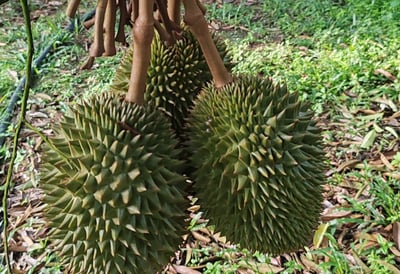

13. Durian Trees Need Specific Climate Conditions
Durian trees require a tropical climate with consistent rainfall—at least 1,500 mm of rainfall per year. They also prefer temperatures between 25°C and 35°C. If there's a prolonged dry season, the tree can become stressed and produce fewer fruits.
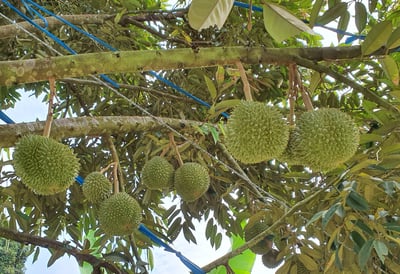

14. Durian Trees Are Sensitive to Wind
While they grow tall in the wild, durian trees are very sensitive to strong winds. In commercial farms, windbreaks (like banana trees or palm trees) are often planted to protect the durians from damage. Even light gusts can cause flowers and young fruits to fall prematurely.
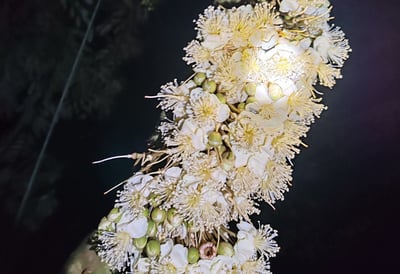

15. The Durian Tree’s Flowering Cycle Is Not Predictable
Unlike many crops, durian trees do not have a fixed flowering period. Their flowering cycle depends on environmental factors like temperature and moisture. Some varieties may flower only once a year, while others can produce flowers in multiple seasons, making it challenging to predict harvest timing.
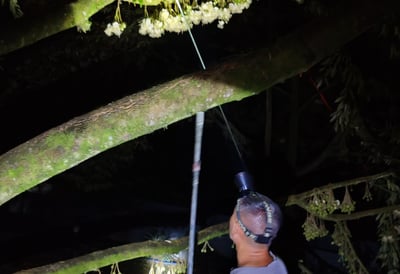

16. Durians Are Not Self-Pollinating
Durian trees rely on bats and sometimes bees for pollination. The flowers open at night and last only a few hours, making the timing of pollination critical. Farmers have to ensure a healthy population of pollinators around their farms, which is why pesticides are carefully managed.
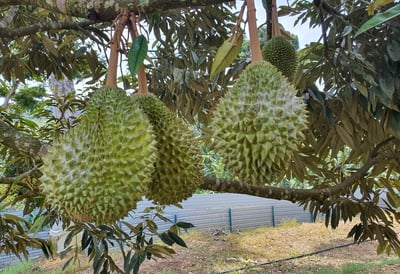

17. Durian Trees Can Produce Different Types of Fruit in One Season
In some cases, a single durian tree can produce multiple types of durians in one season. This is because of cross-pollination between different durian varieties, creating hybrid fruits with unique flavours and textures that are highly prized by collectors.
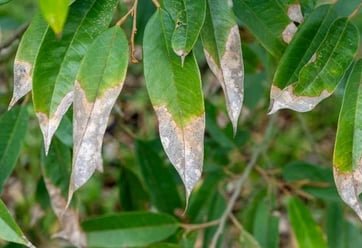

18. Durian’s High Moisture Content Makes It Prone to Disease
Durian fruit, with its high moisture content, is susceptible to fungal infections and bacterial rot. Farmers must monitor humidity and air circulation carefully to avoid these issues, especially in the wet season. Fungicides and proper drainage are often used to prevent such diseases.
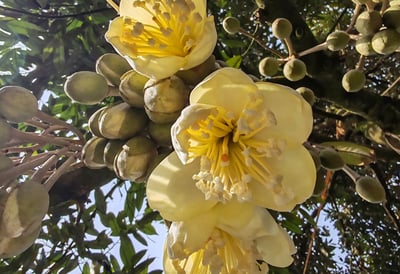

19. Durians Can Be Female or Male
While durian trees are typically hermaphroditic (having both male and female parts), some farmers have noticed that certain trees tend to produce more male flowers (which are ineffective for fruiting) or more female flowers (which are more likely to bear fruit). It’s one of the reasons why pollination can be inconsistent.
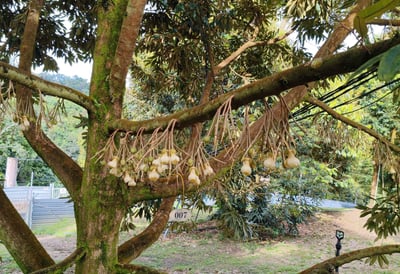

20. The Age of a Durian Tree Affects Its Fruit Quality
Older durian trees (around 15-20 years old) often produce larger, higher-quality fruits compared to younger ones. Their roots have had more time to spread and absorb nutrients, while their trunks have thickened to support bigger fruit loads.
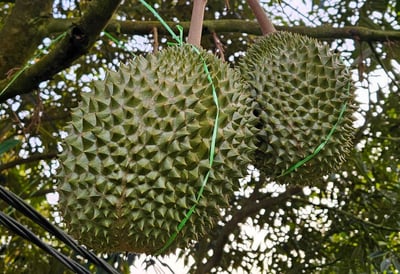

21. The Fruit’s Shape Can Indicate Its Quality
Durians that are uniformly round or oval with fewer cracks or flat spots tend to be of higher quality. A bumpy or irregular shape might indicate stress during growth or improper ripening, often leading to lower-quality flesh inside.
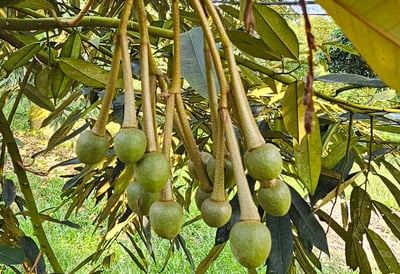

22. Durian Seeds Are Edible (But Not As Tasty)
Durian seeds can be eaten, but they’re harder and less flavorful than the flesh. Some people boil or roast the seeds, and they have a taste similar to chestnuts, though they need to be cooked thoroughly to remove any potential bitterness.
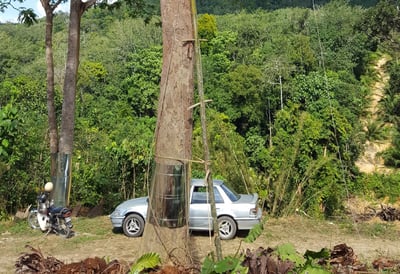

23. Durian Farms Face Climate Change Challenges
Durian farming is highly sensitive to climate change. Prolonged droughts, erratic rainfall, and rising temperatures can significantly reduce the yield and quality of durian crops. In Malaysia, farmers are becoming more aware of the need for climate-adaptive strategies to maintain good harvests especially during prolonged drought and monsoon seasons.
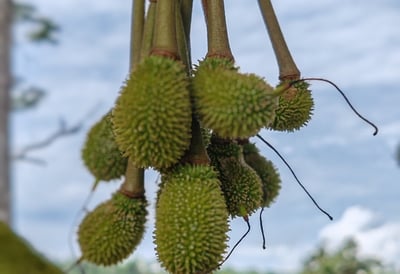

24. Durian Fruits Can Grow in Clusters
While you may be used to seeing a single durian hanging from a branch, sometimes the tree produces multiple fruits in a cluster from the same flower. These clustered fruits are smaller in size, and their flavour is typically more uniform and less intense than single, large fruits.
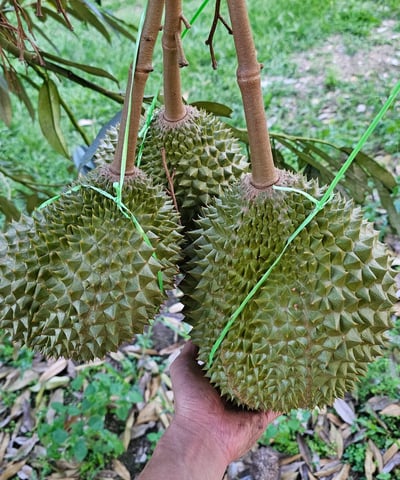

25. How to Pick the Right Durian?
Picking a ripe durian is an art, and not all durians are created equal. Here are some expert tips to help you choose the perfect one:
1. Check for the Right Smell
A ripe durian should have a strong, distinct aroma.
2. Tap It to Test the Sound
Hold the durian and tap it gently. A hollow sound typically means the durian is ripe. If it sounds dense or muffled, it could be unripe or overly immature.
3. Choose a Full, Heavy Durian
A good durian should feel heavy for its size. This means the flesh inside is dense and full.
4. Inspect the Spikes
Durian spikes that are sharp and spread out are often signs of a good, healthy fruit. The spikes should also be dry, not moist.
5. Look at the Color of the Flesh
If you’re able to see the durian’s flesh through any small cracks or openings, the color can give you an idea of its quality. Golden-yellow flesh indicates a premium durian, while a pale or off-white color 'could' suggest an immature fruit.
6. Avoid Overripe or Spoiled Durian
7. Pick One With No Mold
8. Consider Your Personal Taste Preferences
Different durian varieties have distinct flavour profiles:
Musang King: Creamy, bittersweet, rich texture.
D24: Milder, sweet with a hint of bitterness.
Red Prawn: Sweet, soft, and custardy.
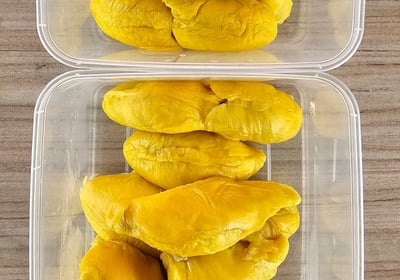

DurioKing Farm
Discover and learn about the journey of our durian farm.
sign up for the freshest durian update!
Copyright © Durio King All rights reserved
